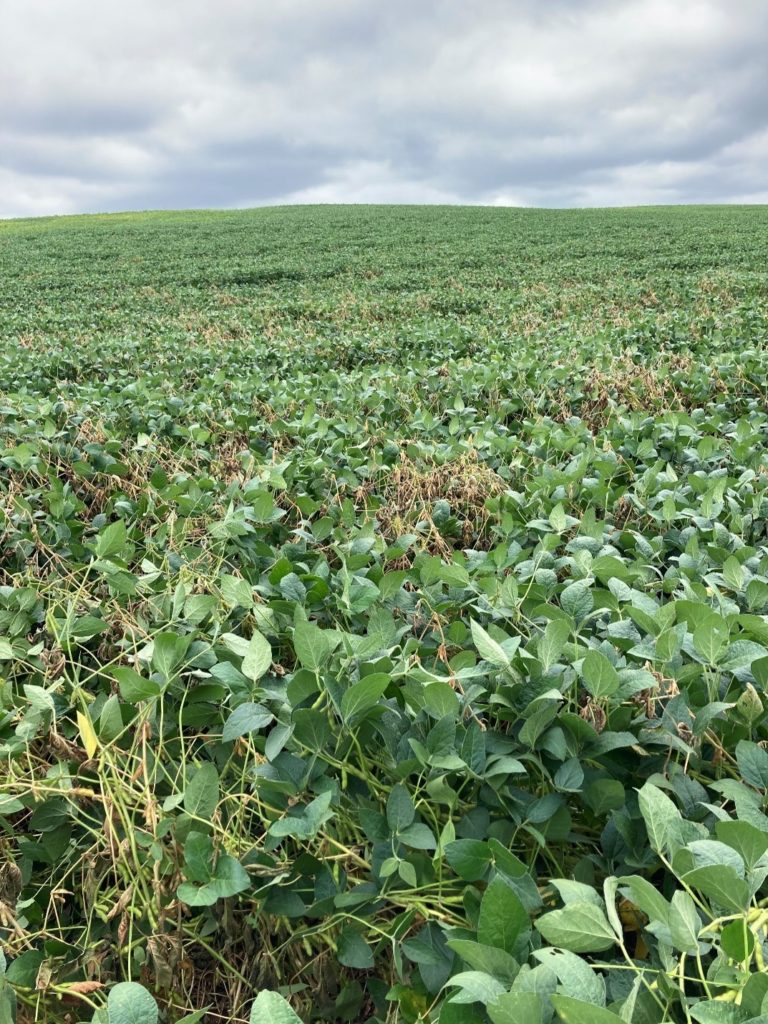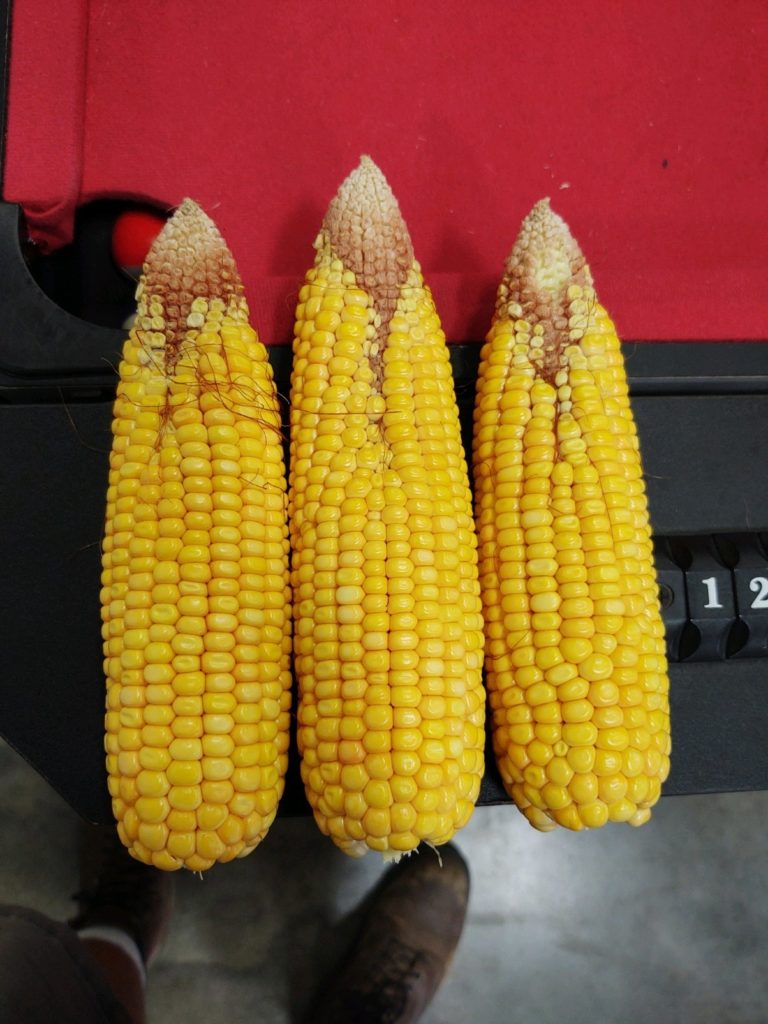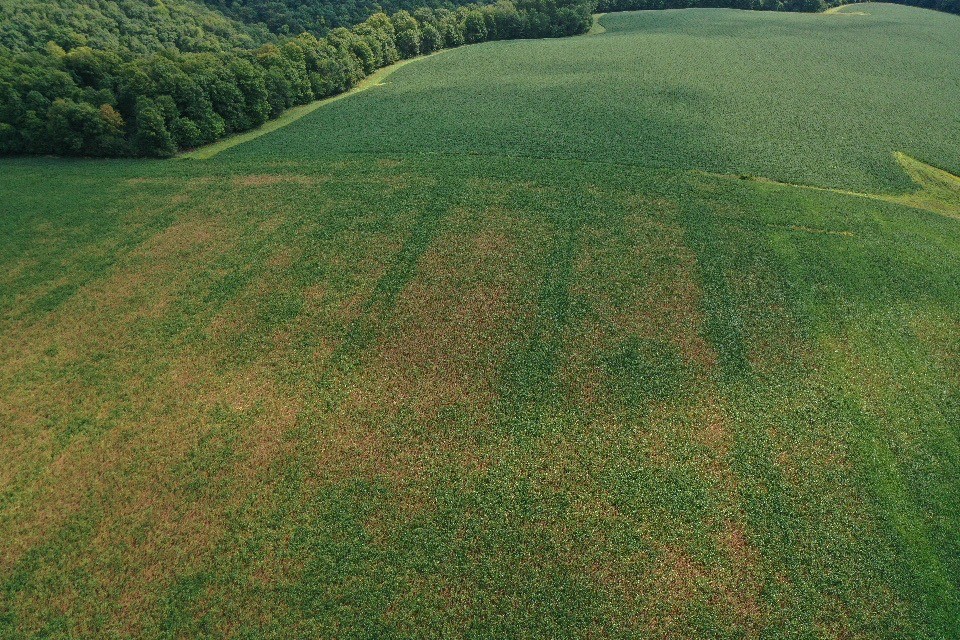The one-stop-shop to hearing everything you need to know this week about what is happening in your fields.
This week’s featured agronomists are:
Dave Richter – Belle Plaine
Casey Carlson – Goodhue
Tanner Borgschatz – Kenyon
Brady Kinneman – Ellsworth
Scroll down to hear from your local agronomist.
West
Belle Plaine – LeCenter – LeSueur
|
Dave Richter |
The news of the day for an Agronomy update is it rained!! Most of our area received widespread rain in amounts of 2- 4”. Last week both corn and soybeans were starting to shut down with lack of moisture to finish the crop. Corn samples taken for silage were coming in from 58% – 66% in many areas and silage season started. We pulled a sample from drought stressed corn to check nitrate levels and came in <300 ppm which would be well below a level of concern. The rains will even out the corn silage moistures and slow down the rapid dry-down of the plants. |
Although the rains came on the late side, the soybeans in most areas will greatly benefit with increased soybean size which will reflect on better yields. As for the corn we will build better test weight with a wetter cool finish to the crop.
As we prepare for harvest it would be a good idea to put a harvest plan together to prioritize fields with stand issues. By mid September walk the corn fields and conduct a lean test. Push stalks until the tassel touches the neighboring row. If stalk rots are starting to affect the plants you will feel the stalk pop or break and we know there could be issues with standability. More than 3 stalks out of 10 would be cause for concern and may need to harvest that field on the early side.
Have a Safe and Successful Harvest .
East
Pine Island – Cannon Falls -Goodhue -Lake City
|
Casey Carlson |
Goodhue Weekly Agronomic Update The last couple weeks we are starting see some spotty white mold in soybeans. This will result in yield loss, but it should be less severe than early onset white mold. I recommend noting what fields you are seeing this in and using increased white mold management practices the next time the field is planted to soybeans. |
Central
Owatonna – Morristown – Wanamingo – Kenyon
|
Tanner Borgschatz |
Now is a good time to walk your corn fields and perform yield checks to estimate what the yields will be this fall before the combine pulls in. First, mark off 17.5 ft for 30″ rows (26 ft for 20” rows) and count the number of harvestable ears in that 1/1000th of an acre. |
I like to randomly grab 3-5 ears within that distance to get an average number of rows around and kernels per row. Multiply ears/acre by rows around and row length and then divide that number by the kernel/bushel factor based on the growing conditions as seen in the table below. Calculating the yield with both 80,000 and 90,000 should give you a good yield range since test weight is not fully determined at this point yet.
If you would like grid sampling done this fall or are unsure if you have any fields that are due for sampling, talk with your agronomist or AYS specialist so we can get your fields sampled as timely as possible between harvest and tillage. For our AYS customers, as the combines are coming out of the sheds, contact your AYS specialist when you are ready for your yield monitor to be loaded and updated to help ensure quality yield data to use this winter.
|
Brady Kinneman |
We have received rain this week with more in the forecast for tomorrow. Some areas it’s a day late and a dollar short. Our territory is split into two tales. To the north we have drought. Corn is tipped back especially in the Corn on Corn. To the South (HWY 10 South) The Crops look great driving by but getting out into the fields we find that when we combine a dry year, excess heat, and the best rootworm beetle hatch I’ve seen in 10 years, we have tip back, poor pollination, and nutrient deficiencies are showing up. |
Tip back due to poor pollination
Nitrogen and Sulfur are the most prevalent deficiencies observed. Sulfur deficiencies can be seen at the top of the corn plant leaves turning a lime green and some field top leaves are dying off. This can be problematic for grain fill. We need those top leaves to stay healthy to photosynthesize late into reproductive stages along with cooler nights to insure good grain fill. Without this the plant could prematurely die causing kernel size to be small. It will be very interesting to see how fungicide applied at tassel has an effect this year.
Seeing the effects of sulfur deficiency
Soybeans are all over the board. Early July winds lodged soybeans and now we have a white mold issue mostly in the rotation of corn-bean, corn-bean. Corn on Corn to soybeans have less white mold but it’s still showing up in those fields as well. I believe what was effected early with white mold will take a yield hit but at the crop stage we are at anything that is effected here on out shouldn’t effect the yield as much. Remember the odd years here have produced more white mold. 2019, 2017, 2015 were also years where white mold had major effects.
Field effected by white mold
Please, DO NOT jump to conclusions on white mold prevention next year because it wont be as bad, but 2023 we need to remember the fields effected in 2021 and take measures to prevent it for the same fields that will be soybeans again in 2023. Prevention could include using cobra or Flexstar GT to burn the foliage back, Using fungicides, and fall spraying Contans (Contans is a fall applied biological). I would target fields for prevention that are great fertility or have manure application.
Hope everybody is having a great week!













